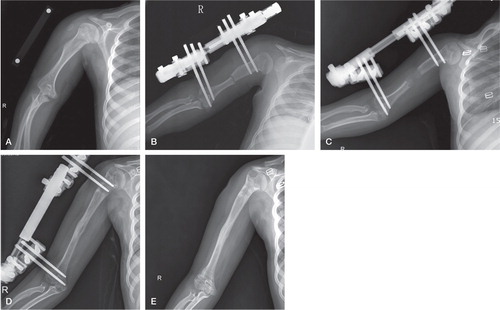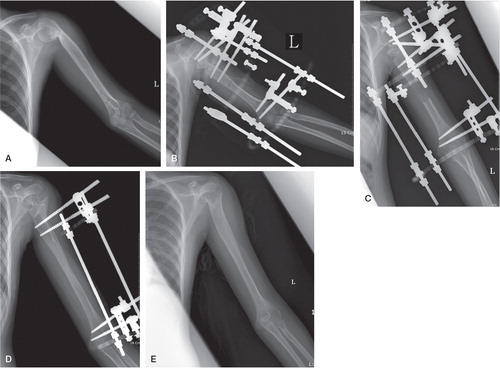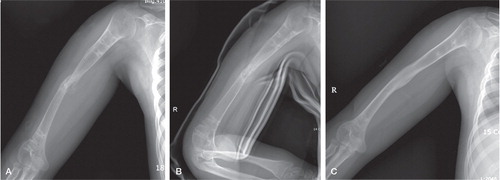Figures & data
Table 1. Clinical details of the patients treated with humeral monolateral fixator
Figure 1. A. Case no 4. A 12-year-old girl with achondroplasia showing shortened right humerus.
B. Osteotomy and monolateral fixator application for gradual lengthening of shortened humerus.
C. Desired length achieved with use of monolateral fixator.
D. 7 months after osteotomy, full consolidation of the newly formed callus. The pixel value ratio (PVR) measured at this point was > 1 in all 4 cortices.
E. At the final follow up, 2 years after osteotomy.

Figure 2. A. Case no 20. A 10-year-old female with shortened and deformed (varus angulation) proximal humerus due to osteomyelitis.
B. Bifocal humeral osteotomy with use of hybrid monolateral fixator for correction of deformity and lengthening simultaneously.
C. Desired lengthening of the humerus at the distal osteotomy site.
D. Full consolidation of the lengthening site, 7 months after osteotomy. Proximal pins and assembly were removed after healing of proximal osteotomy, thereby converting it to a simple monolateral fixator.
E. Final follow-up 5 years after osteotomy, showing excellent remodeling.

Table 2. Comparison of various series using different modalities for humeral lengthening for various etiologies
